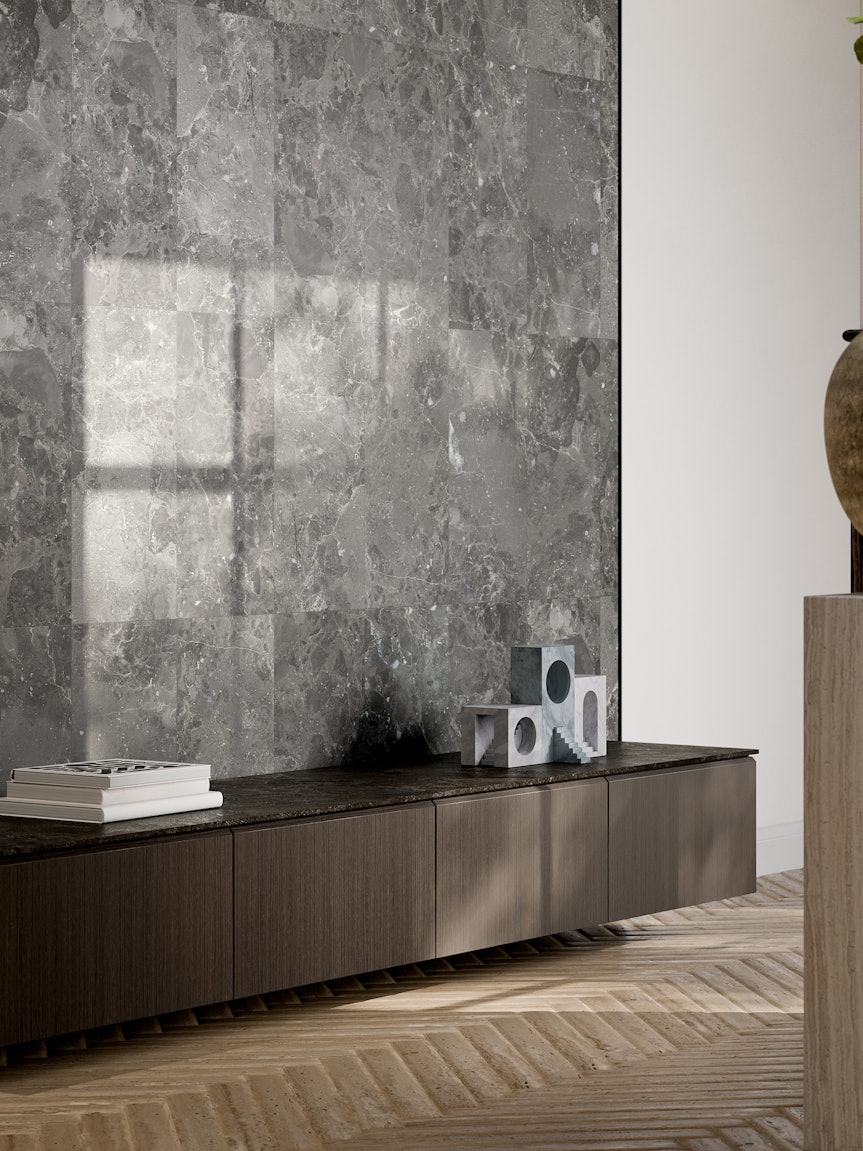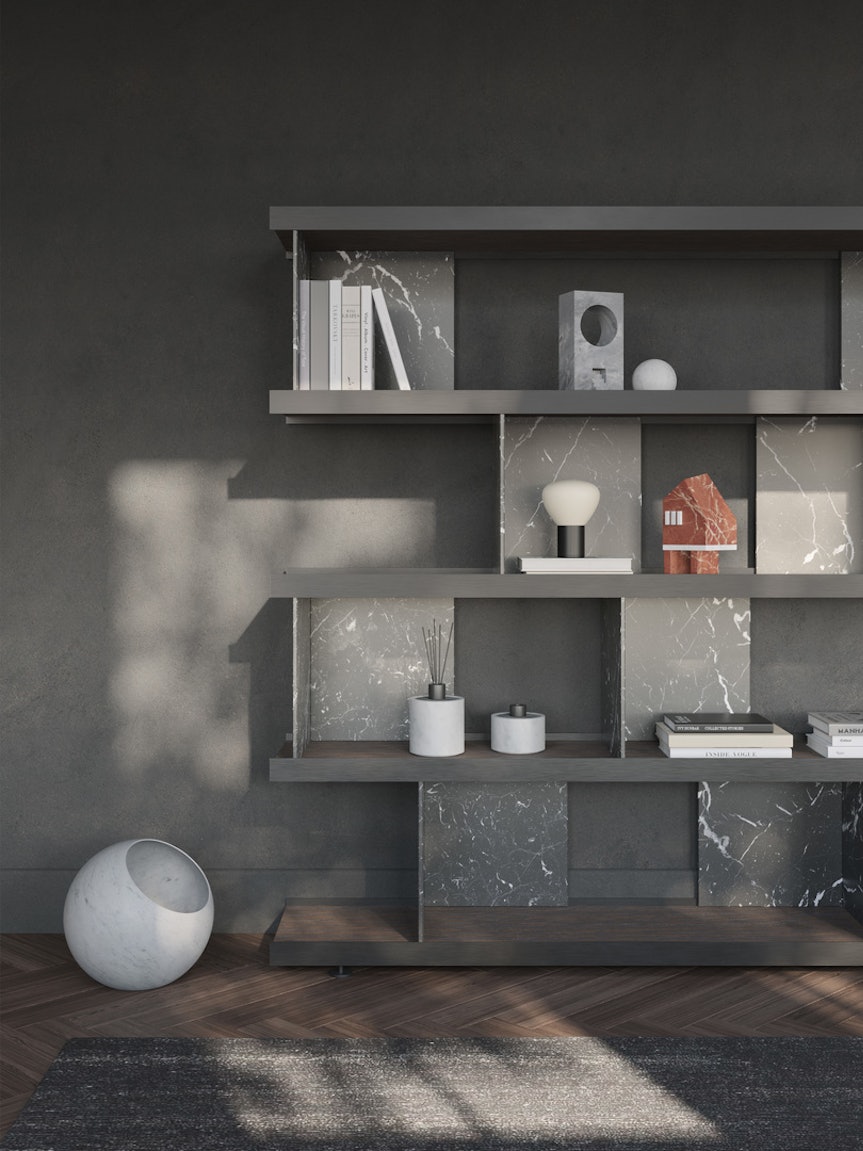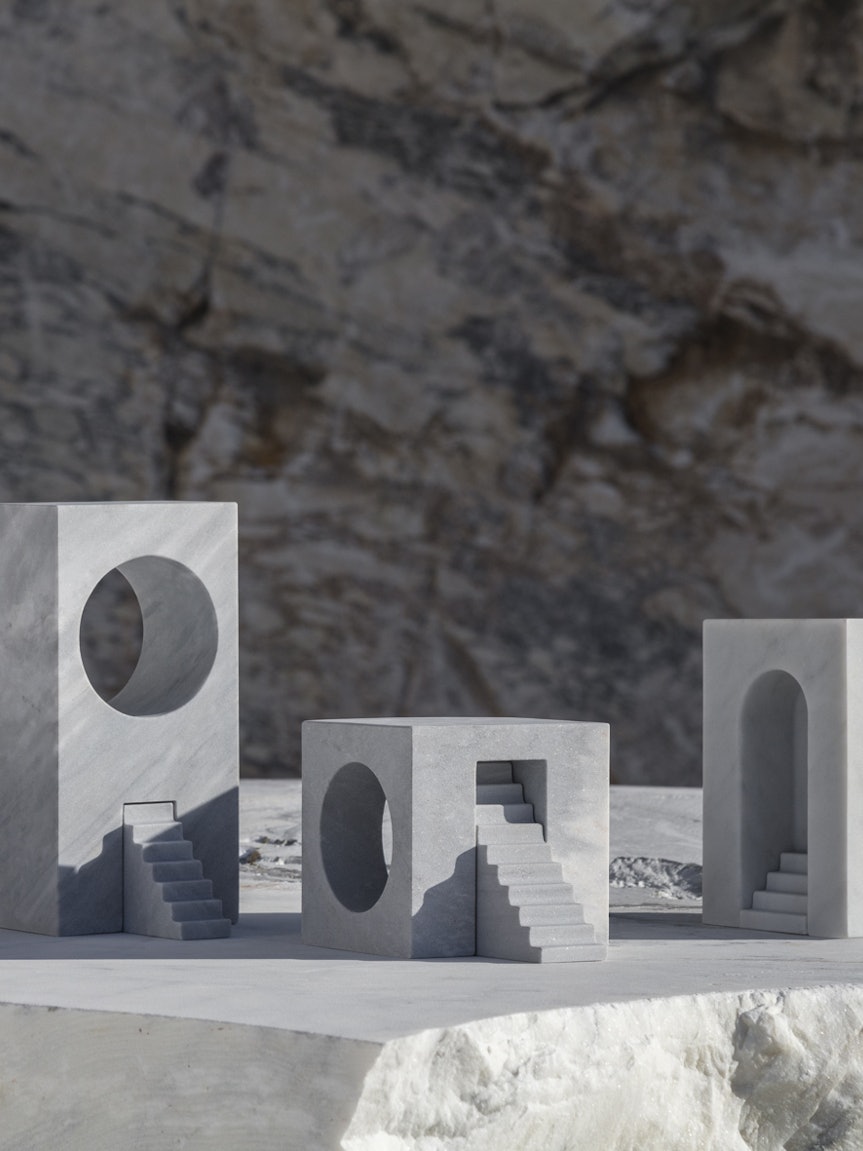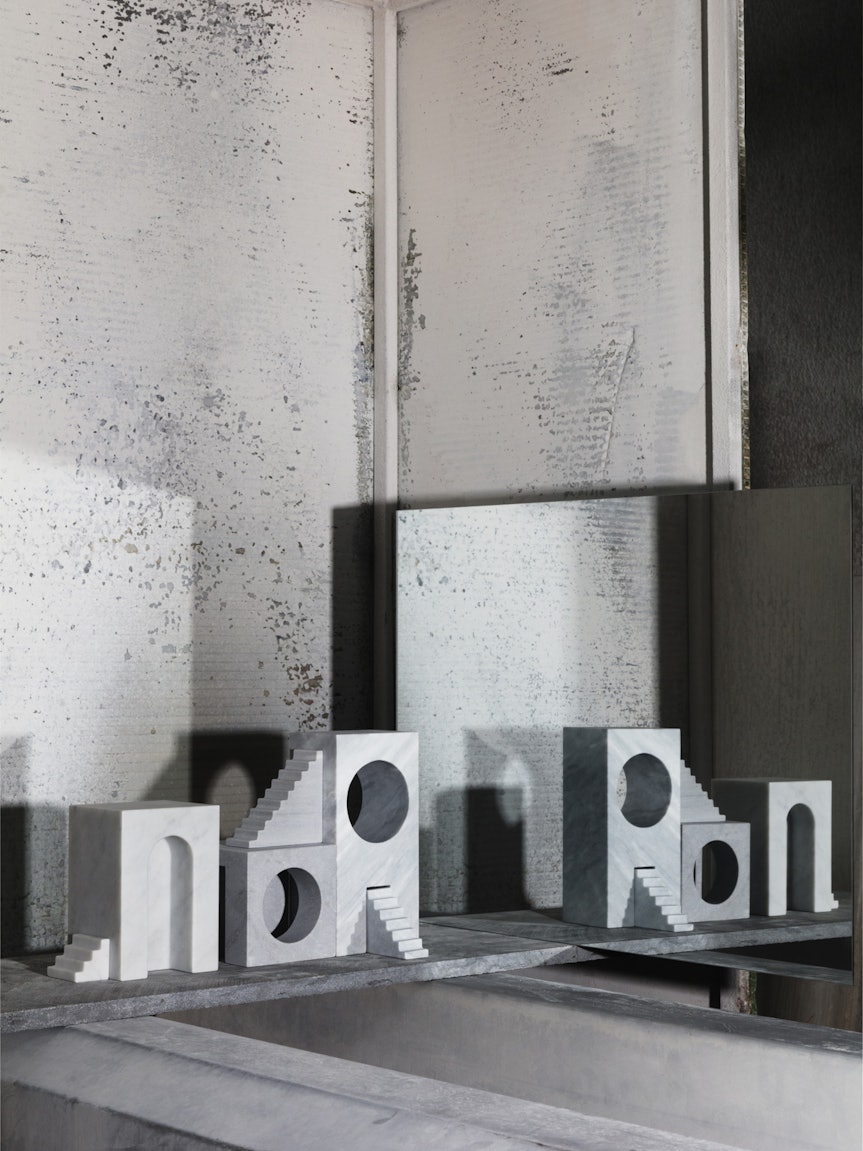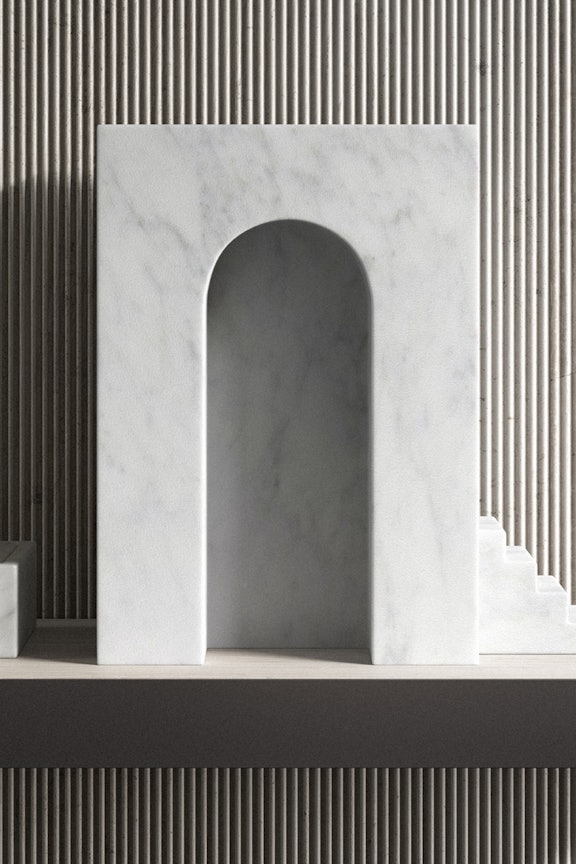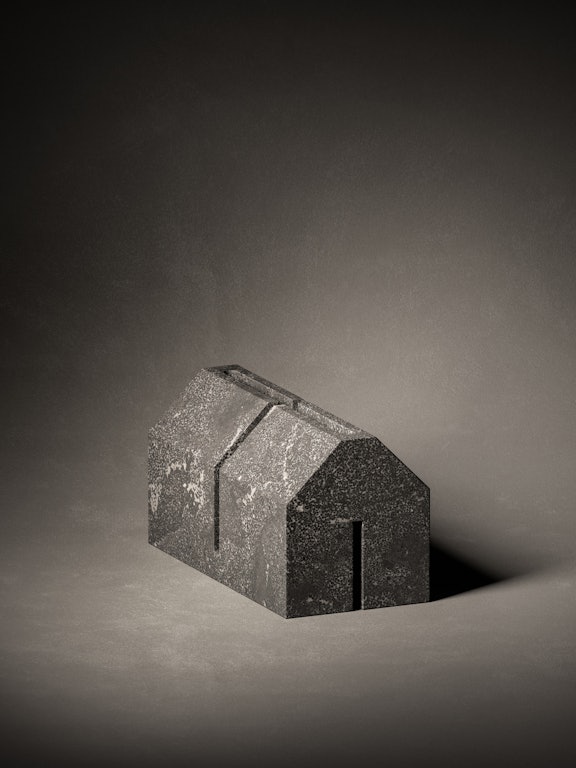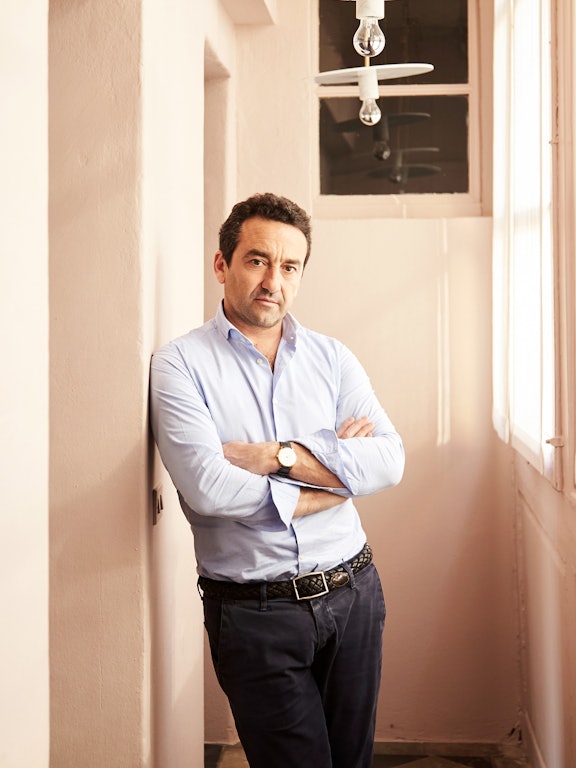A charming interplay of geometric forms
The world-changing events of 2020 gave rise to The Village, an initiative that explores the concept of home in an innovative and highly personal key.
No longer merely a structure that serves as a base for our comings and goings, home has become a haven and an extension of who we are. It was this reflection upon its return to its ancestral role as a sanctuary, albeit an emotional rather than physical one, that prompted us to interpret it through sculpture.
And, just as the experience of living through lockdown was a global phenomenon, it seemed appropriate to involve designers from around the world, inviting them to bring their diverse backgrounds and points of views to the project.
The result is an eclectic, archetypal village that reflects the realisation that although we may come from different cultures, at heart the world is a single extraordinary community.
The name of Sicilian architect and designer Elisa Ossino’s contribution to The Village encapsulates this idea to perfection. Utopia is, in fact, a homage to the architectural school of the same name, which places importance on equality and communal peace and the designer interprets this in a metaphysical key in a trio of charming geometric pieces.
The intuitive shapes of each miniature evoke the look and feel of a Mediterranean village bathed in the midday sun. Whilst each element is a standalone piece, there is also a delightful modularity, with a myriad of possible interconnecting configurations, linked by a series of diminutive Escherian flights of stairs.
This intriguing interaction between architecture and playfulness is brought to life in the timeless cool white tones of Bianco Carrara, the striking grey veins of Grigio Versilia and muted, ethereal Palissandro Bluette.
Whether displayed as single pieces or as a triple composition, Utopia nestles seamlessly alongside the other miniature pieces that make up The Village, where everyday life and design coexist in perfect harmony.
“For me, it is incredibly stimulating to have the chance to create objects that will be reproduced in certain quantities, but at the same each will be unique. The beauty of stone, and what makes it so fascinating, is the fact that it can’t be replicated. Every block has its own completely unique colours and veining.”
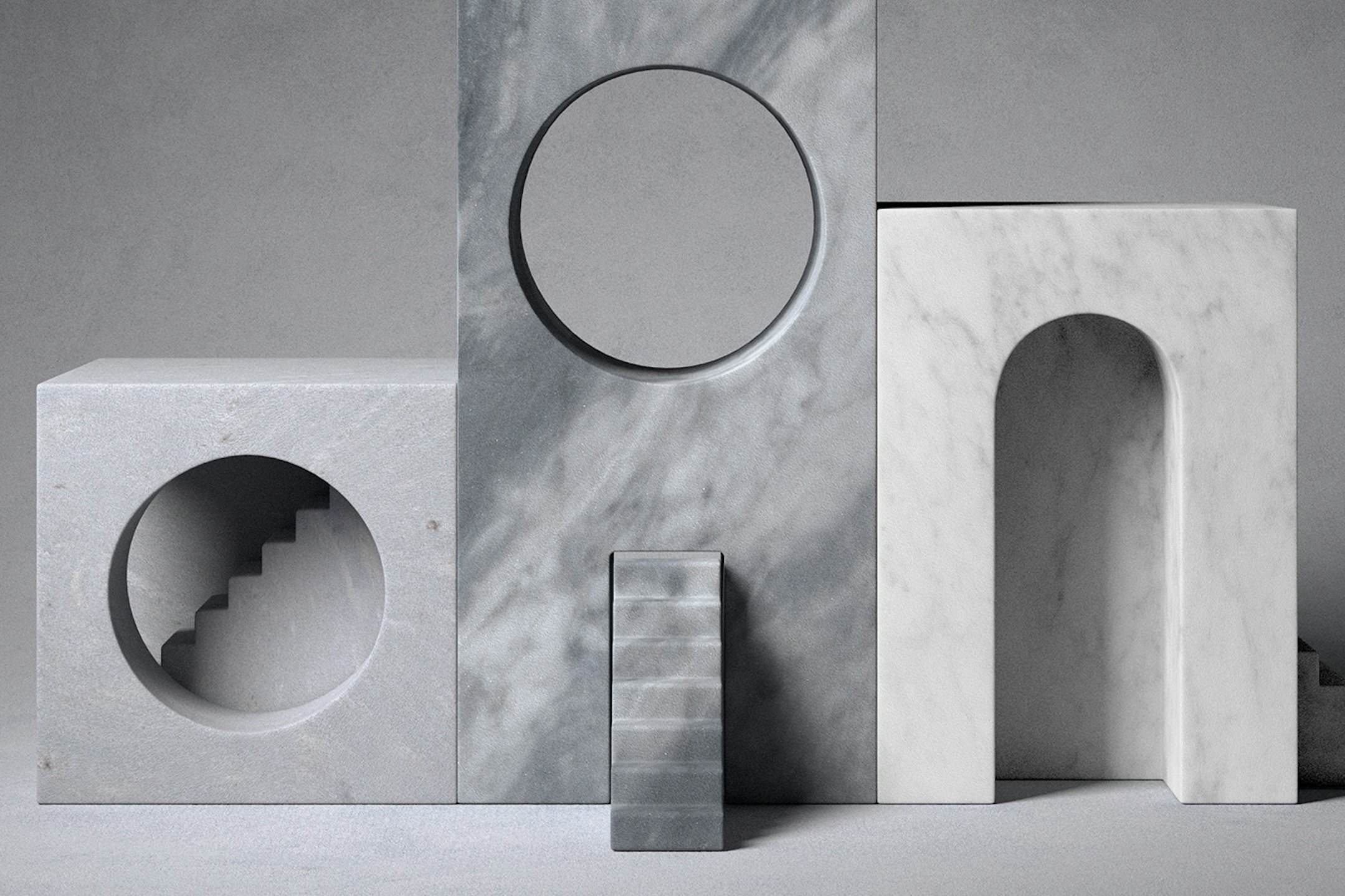
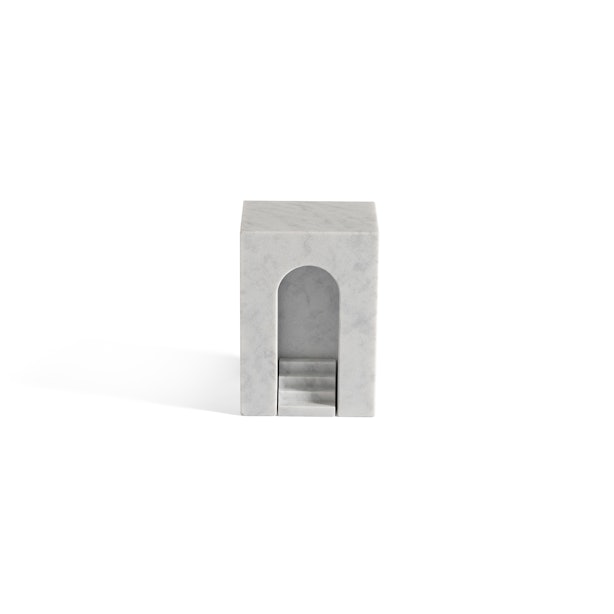

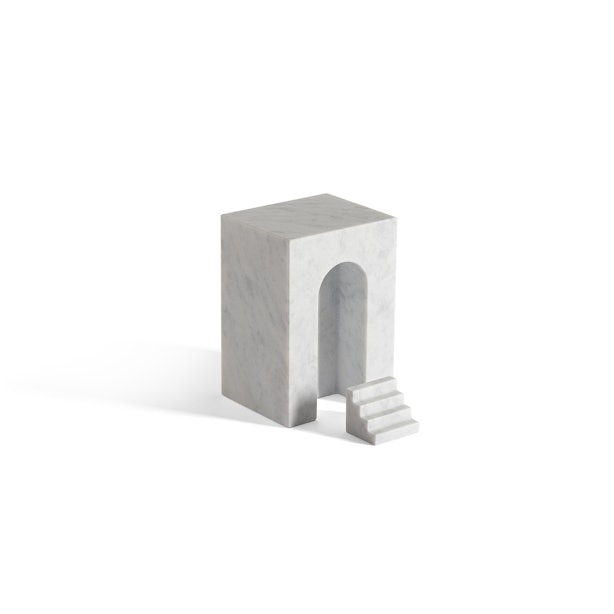
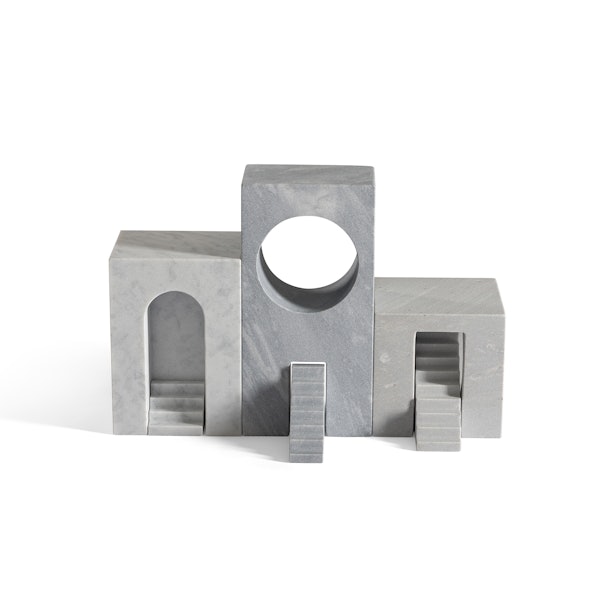
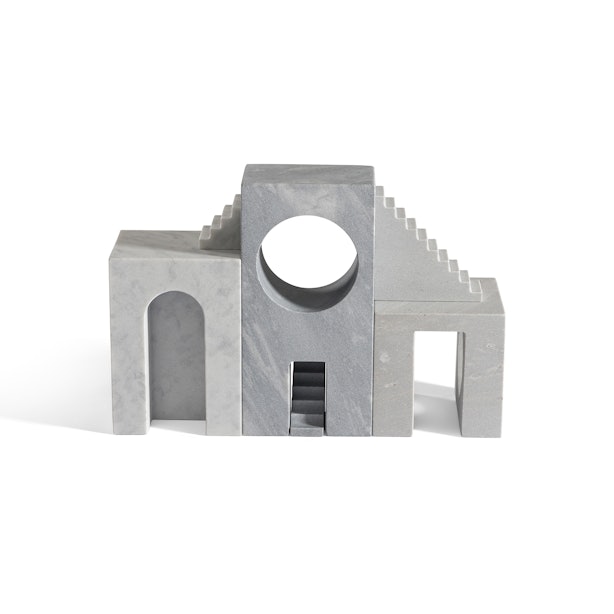
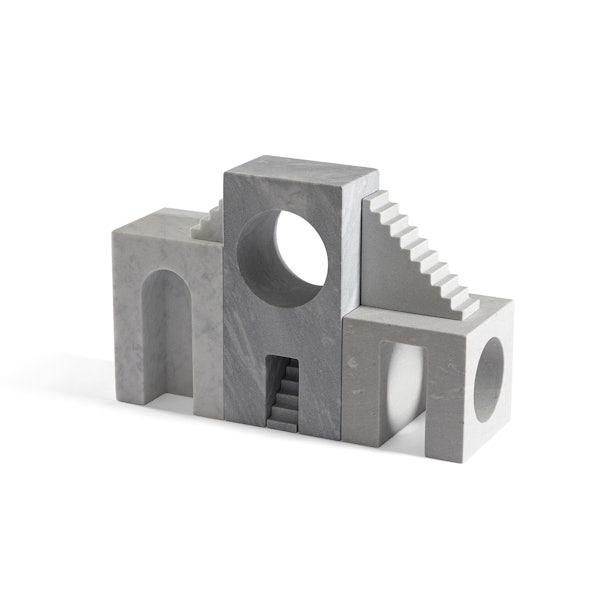
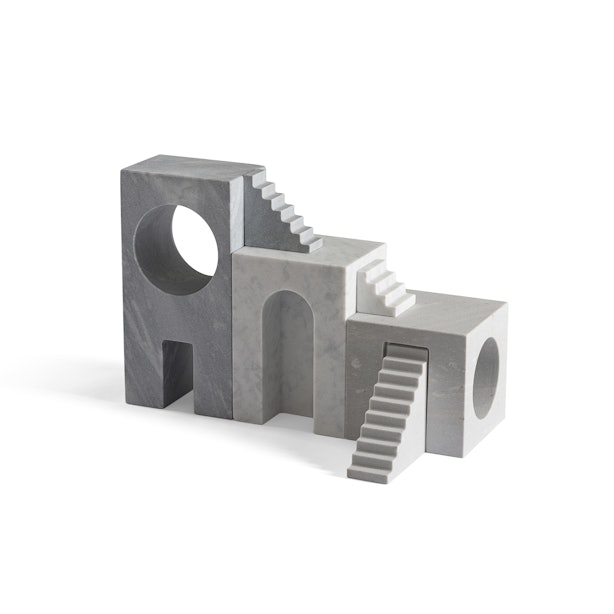
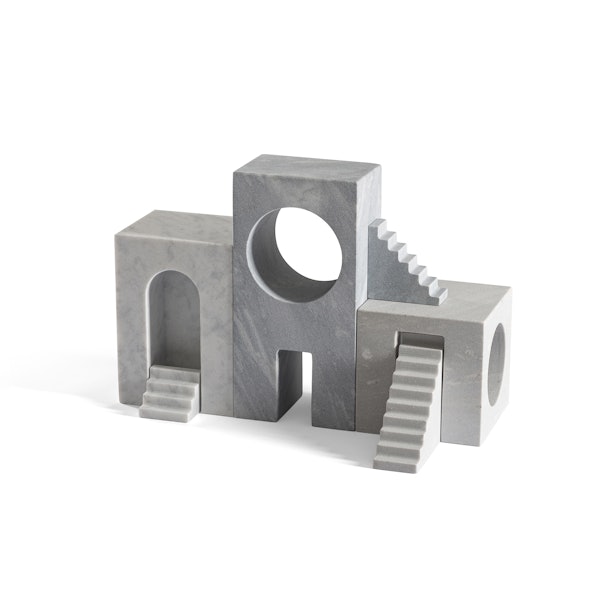
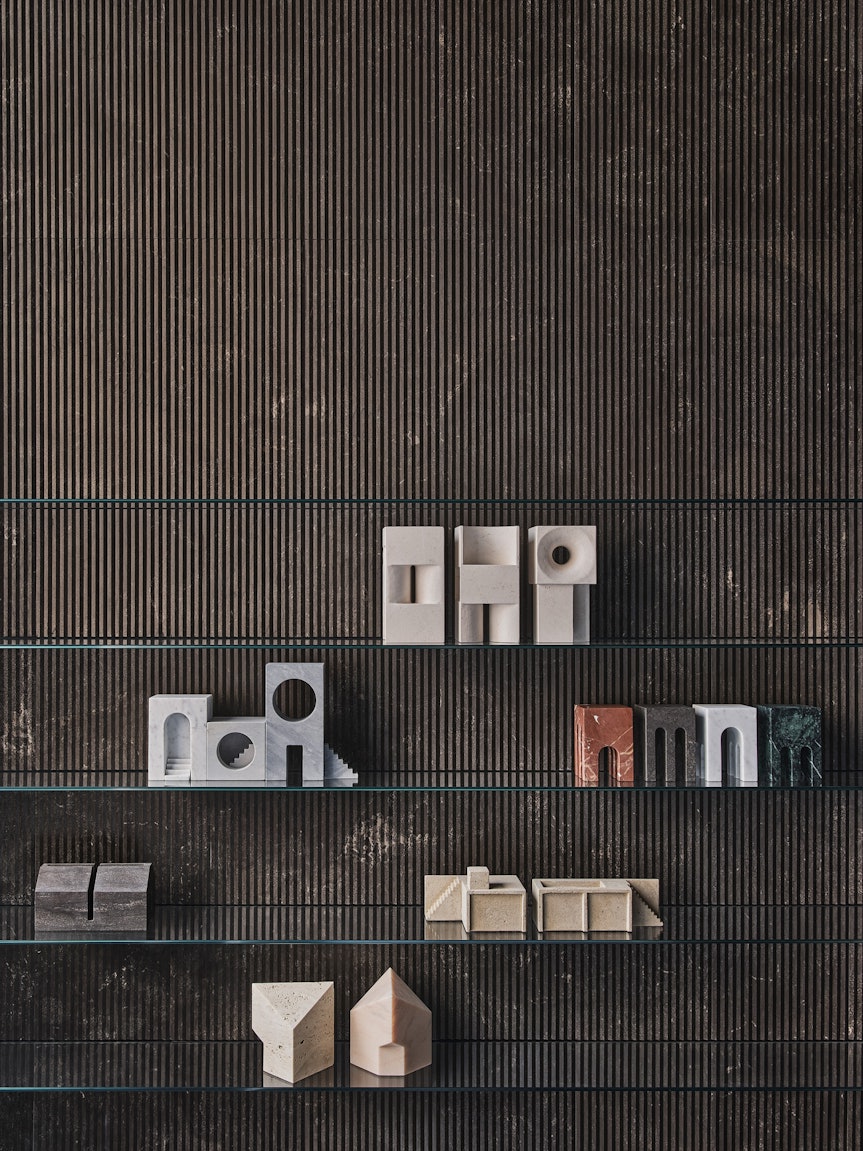
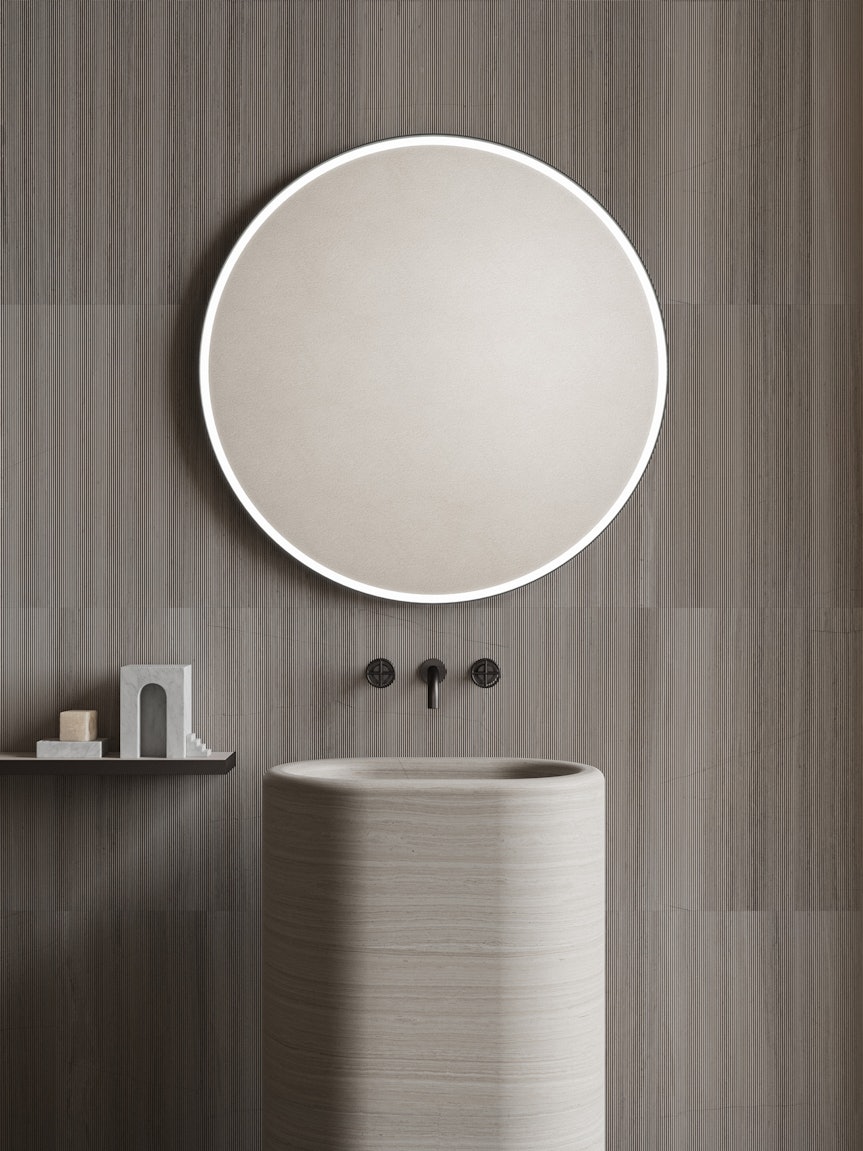
_new.jpg?fp-x=0.5&fp-y=0.5&auto=format&w=863&h=1151&fm=jpeg&q=70&fit=crop)
_Utopia.jpg?fp-x=0.5&fp-y=0.5&auto=format&w=863&h=1151&fm=jpeg&q=70&fit=crop)
.jpg?fp-x=0.5&fp-y=0.5&auto=format&w=863&h=1151&fm=jpeg&q=70&fit=crop)
.jpg?fp-x=0.5&fp-y=0.5&auto=format&w=863&h=1151&fm=jpeg&q=70&fit=crop)
.jpg?fp-x=0.5&fp-y=0.5&auto=format&w=863&h=1151&fm=jpeg&q=70&fit=crop)
.jpg?fp-x=0.5&fp-y=0.5&auto=format&w=863&h=1151&fm=jpeg&q=70&fit=crop)
.jpg?fp-x=0.5&fp-y=0.5&auto=format&w=863&h=1151&fm=jpeg&q=70&fit=crop)
.jpg?fp-x=0.5&fp-y=0.5&auto=format&w=863&h=1151&fm=jpeg&q=70&fit=crop)
.jpg?fp-x=0.5&fp-y=0.5&auto=format&w=863&h=1151&fm=jpeg&q=70&fit=crop)
.jpg?fp-x=0.5&fp-y=0.5&auto=format&w=863&h=1151&fm=jpeg&q=70&fit=crop)
.jpg?fp-x=0.5&fp-y=0.5&auto=format&w=863&h=1151&fm=jpeg&q=70&fit=crop)
.jpg?fp-x=0.5&fp-y=0.5&auto=format&w=863&h=1151&fm=jpeg&q=70&fit=crop)
